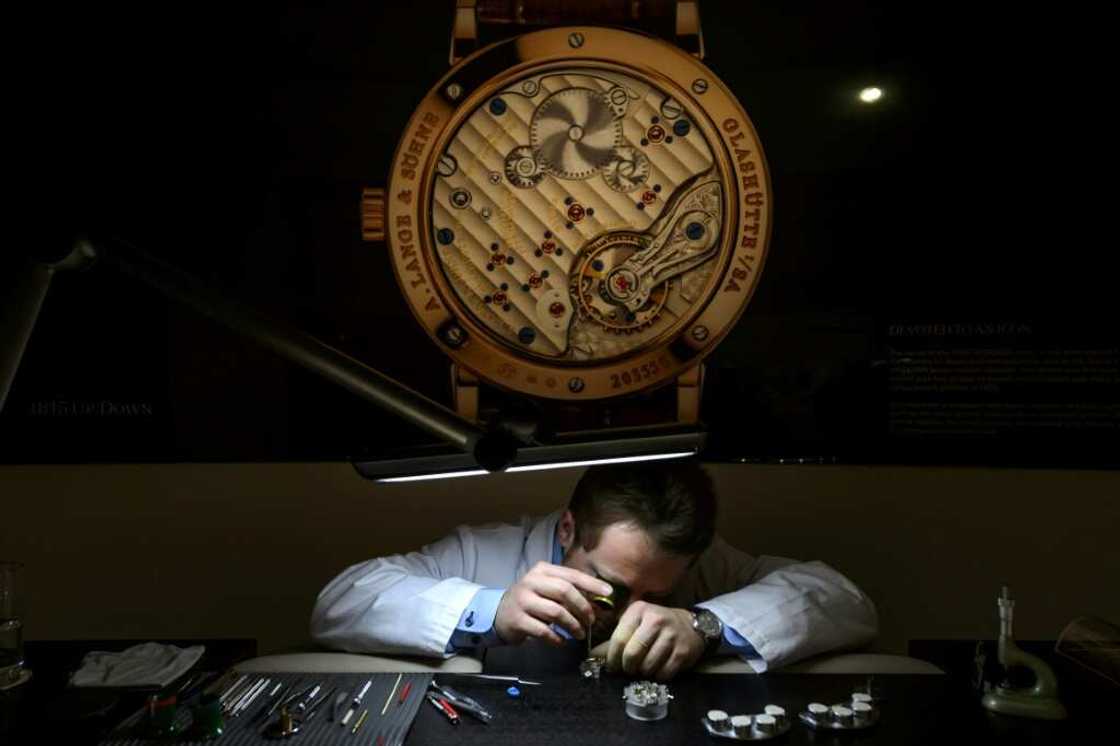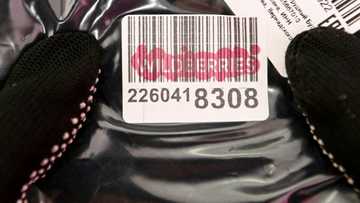Luxury watchmakers woo Generation Z with Snapchat and bitcoin

Source: AFP
Luxury watchmakers are using Snapchat and bitcoin to woo Generation Z, unused to wearing something on the wrist, believing younger buyers could become a powerful driver of sales growth for top-end timepieces.
Millennials (born between 1980 and the late 1990s) and Generation Z (born between 1997 and 2010) are taking an early interest in luxury goods, according to a study by management consultants Bain & Company and the Italian luxury brands association Altagamma Foundation.
Their spending is expected to increase three times faster than that of other generations by 2030, it said.
At last week's Watches and Wonders trade fair in Geneva, where 48 brands such as Rolex, Cartier and Patek Philippe showed off their latest creations, Swiss watchmakers were well aware of the trend.
"It is very important that once a year we showcase that wearing a watch is trendy, and even something for the youngest generation which is not used to wearing watches," Rolex chief executive Jean-Frederic Dufour said during the annual fair.
The sector needs to reach out to a generation "used to seeing everything on a screen", he said.
PAY ATTENTION: Join Legit.ng Telegram channel! Never miss important updates!
On a stand dedicated to innovation, representatives from the Snapchat instant messaging app showed off an application that lets people try on watches virtually, via a smartphone or tablet.
It adapts to the user's wrist to try on, for example, Cartier's flagship models, and even allows them to customise the colours of Hublot watches.
In a nod to this generation, Hermes presented a collection with designs inspired by its silk scarves, including one representing a princess on horseback taking a selfie photo.
Wealth transfer
"The younger generation -- contrary to popular belief -- have more economic power than any generation that preceded them," said Jean-Philippe Bertschy, an analyst with Swiss investment managers Vontobel.
"They are earning more, saving more, and investing earlier and at a higher rate than previous generations."
An interesting yet still underestimated phenomenon is coming down the line, he added.
Millennials and Generation Z "are poised to be on the receiving end of a massive wealth transfer in the coming two decades, projected to total more than $80 trillion through 2045 for the US only", he said.
In the nearer term, however, this generation is stifled by soaring housing costs, with Morgan Stanley analysts noting that according to the US census, almost half of US young adults aged 18 to 29 still live with their parents -- a level not seen since the 1940s.
"They simply have more disposable income to be allocated to discretionary spending", the analysts said.
On the other side of the Pacific, H. Moser chief executive Edouard Meylan said that a "younger, more digitalised" clientele was emerging in Asia.
"More than 50 percent of sales in China are to Gen Z and Millennials," he told AFP.
The brand has also carried out sales in bitcoin, including a 350,000-Swiss franc ($380,000) watch that sold for 10 bitcoins, which was then the equivalent price when the digital currency was booming.
"We filmed the transaction," said Meylan.
Apple Watch opened doors
According to Morgan Stanley analysts, so-called icon watches -- the flagship models of major brands -- "resonate particularly well" with a generation quick to post pictures of their purchases on Instagram.
They want "instantly recognisable products", especially so for watches given that they "rely much less on logos and monograms than leather goods and ready to wear".
Some, on the other hand, "want to stand out with a watch that others won't have", said Christophe Hoppe, a Frenchman now living in Australia, where he founded the Bausele brand after a career in watchmaking in Switzerland.
"We had lost this generation with mobile phones, but found it again with the Apple Watch," he told AFP.
He recently teamed up with social media influencers to sell a $1,200 model online.
"They got back into the habit of wearing something on the wrist with connected watches, and now they want something else," he said.
Source: AFP





